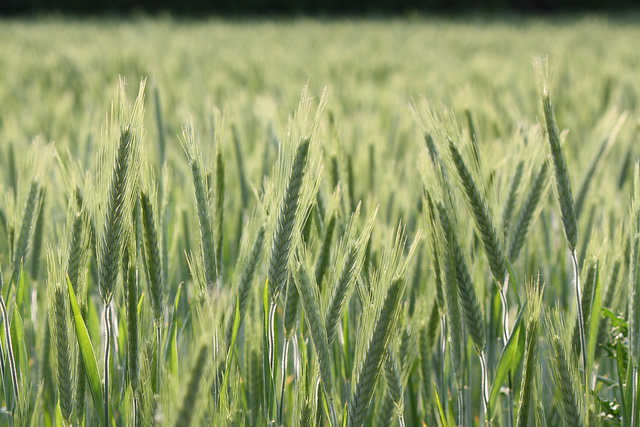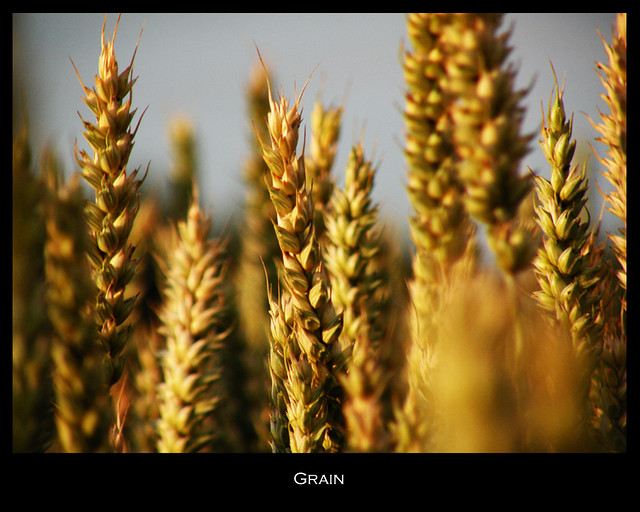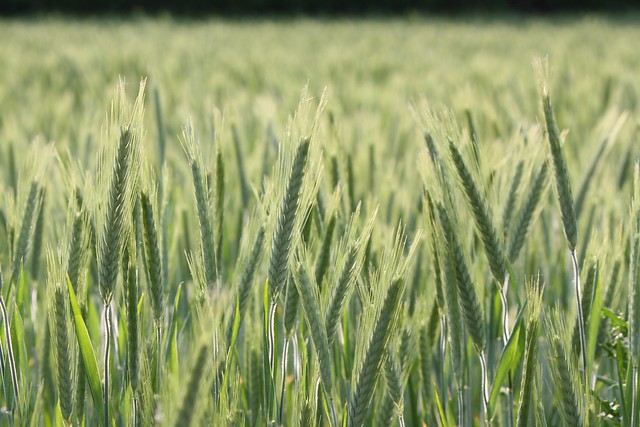Soaked, Sprouted, or Soured: The Healthy Way to Treat Your Grains
This post may contain affiliate links, including those from Amazon.com, which means we earn a small commission off your purchases. And here's the thing: We only mention services and products that we think are truly worth your attention, whether they're free, paid, or otherwise. This site relies on YOUR trust, so if we don't stand behind a product 110%, it's not mentioned. Period.
I can't picture a trip to France without enjoying a baguette or remember travels in Central America without a tortilla at every meal. And, oh, how I love cake. And muffins. And scones. And Reuben sandwiches. And cinnamon rolls. Baked goods are such comfort foods!
Baked goods didn't used to be so ubiquitous. Traditional peoples used grains only minimally in their diets – and they were foraged, of course, not domesticated and sown. However, what I find interesting is that nearly all primitive cultures used similar techniques of preparing the grains to make them digestible: they were either soaked for long periods of time, soured (think sourdough), or sprouted.
What primitive peoples knew instinctively, we in modern times have backed up with industrious research. In this case, the “faith” of the primitive peoples and the “science” of the modern day have both proven wise: grains are difficult to digest and often cause digestive and systemic problems if they're not properly prepared. Gluten intolerance, Irritable Bowel Syndrome, celiac disease, frequent diarrhea or constipation, and overall malnourishment are the most commonly reported issues related with eating improperly prepared grains.
(For the sake of this article, we will define “proper preparation” as the methods outlined by Weston A. Price and popularized by Sally Fallon in her opus, “Nourishing Traditions.”)
However, all this changes if the grains are soaked, sprouted, or soured.
Unlocking the Goodness
Think of it this way: grains are seeds. Therefore, they act like seeds. Seeds only germinate and grow once they're in the right conditions, such as those as we move from winter into spring: basically warm and wet.
And once they germinate, they grow great gonzos, which is due to the fact that everything they need to nourish themselves for those first few days of growth is in the seed itself. Those nutrients and enzymes are stored up and saved until they're “unlocked” by the warm, wet conditions, then they feed the newly sprouted plant and nourish it until the plant has rooted and can absorb nutrients from the soil and the sun.
But what keeps those seeds from sprouting early are anti-nutrients – these are binding agents that “lock up” and preserve the nutrients until they're needed.
So, all this is still true when we eat those seeds, including grains.
If we eat grains without “unlocking” those enzymes and nutrients, our bodies can only minimally digest or absorb the nutrients. Much of the goodness of whole grain falls short.
Thus soaking, sprouting, and souring the grains are three ways to break down the anti-nutrients (such as phytic acid), make the nutrients more bio-available, and soften the gluten for easier digestibility. Just as raw milk is more often digestible by lactose-intolerant individuals, properly prepared grains are more often digestible by those with gut dysbiosis and other immunological dysfunctions.
So let's take a closer look at each method and when to use each one:
Sprouting
Sprouted grain is just like any other sprout: there's the seed and the tiny shoot of the new plant has just started to appear at one end. The nutrients and enzymes are actually at their peak right at this stage of germination, so this is the healthiest way to eat grains. The anti-nutrients aren't just mitigated, the nutrients are maximized!
After germination, the grains are dehydrated and ground into flour.
Sprouted flour looks just like whole wheat flour and can be used in any baking application. It gives a nutty, toasted flavor to any baked good that I find irresistible.
The downside is that when you're used to shatteringly light croissants or fluffy biscuits, using entirely sprouted flour in your recipe can be a bit… well, heavy. However, I found that as I got used to it, I actually came to prefer the taste and texture of the sprouted flour. You can get used to this by substituting only a bit of sprouted flour at first – don't feel the need to go full bore.
And switching to sprouted grain needn't be costly. There's a lovely sprouted grain bakery in our area that produces wonderfully squishy loaves and even our local Costco carries their bread for a price that's similar to any other whole grain bread.
To find sprouted flour online, see the resources page at Nourished Kitchen.
To make your own sprouted flour, see this wonderful pictorial at Kitchen Stewardship.
When to use the sprouting method:
Use sprouted flour for anything that requires flour but that doesn't need to be light and fluffy, such as crackers, bread, pie crust, cookies, homemade pasta, and roux.
Soaking
Soaking is a great method for dealing with both whole grains and ground flour.
To soak flour, mix all the wet ingredients in a recipe with the flour, then set aside for several hours at room temperature before adding the remaining ingredients. It's simple and straightforward, but can be a bit problematic only since the flour has time to absorb more moisture, the texture of the finished baked good can be affected. Merely play with the quantities in your recipe and you'll figure out what works best for you.
To soak grains, such as quinoa, rice, or rolled oats, merely cover the grain with warm water and add a splash of something acidic, such as yogurt whey, lemon juice, or vinegar. Let sit at room temperature for 6-12 hours before cooking the grain. This is an especially easy way to prep oatmeal for breakfast.
When to use the soaking method:
Use the soaking method for baked goods made with batters, such as quick breads, pancakes (get the recipe in our free cookbook), waffles, crepes, coffee cake, and muffins, as well as other non-yeast breads, such as biscuits and tortillas.
It's also an great method for prepping grains to be used in other applications later, such as granola, baked oatmeal, classic muesli, and quinoa salad.
I should also mention that there are valid questions about the viability of soaking as an adequate way to break down anti-nutrients. Katie at Kitchen Stewardship has written well about the science behind soaking flour and grains and I appreciate her well articulated posts on the subject.
Souring
As regular readers of this site know, I have a love affair with sourdough. I use it when making pasta, cakes, pizza crust (see the recipe in our free cookbook), swirl breads, crackers, cupcakes, pretzels, hot cross buns, in addition to – of course – lovely, beautiful bread.
In the case of breaking down anti-nutrients, sourdough works similarly to soaking with the added benefit of all the lovely lactic acid bacteria that chew through all those binding agents, predigest the gluten for you, and then produce carbon dioxide as a by-product, creating a natural leavening.
If you'd like to try sourdough, but don't have a friend who can share their bounty with you, you can try making your own or purchase a starter from Cultures for Health.
When to use the souring method:
Souring works fantastically with breads and baked goods of all kinds, especially those that benefit from a tender crumb or ones that need a high rise.
Avoid it for any application that needs a dry flour, such as roux, or if you want to avoid leavening.
Go Grain Free
And of course, you can avoid grain altogether if you prefer! There are some wonderful wonderful ways to go grain-free, but I myself have very little experience with grain-free baking, so I won't offer any advice in that arena.
There are, however, several excellent blogs that offer Going Grain-Free e-courses or are dedicated entirely to grain-free cooking. Here's a list of just a few to get you started (there are so many more!):







Thank you for this easy to understand explanation of traditional preparation of seeds and grains. I have been trying to educate my friends and family on the importance of properly prepared grains. This is a good post to forward to help them understand it all. Thanks so much.
Daryl,
You are so welcome! I’m glad to know it’s helpful! 🙂
I should point out that soaking and souring doesn’t work with whole wheat flour in tropical climate as it goes bad in a few hours. Soaking in such places only applies to coarse grains like Rye, Corn, Barley as wheat flour will only tolerate room temperatures overnight during winters. Temperate climate doesn’t pose any of those restrictions
That is an excellent point. You certainly want to soak the grains without them fermenting or rotting. Although I would imagine that’s how the Ethiopians came up with injera, their bread made of teff grain that is ground, soaked, and fermented.
Anyone who is familiar with a hot, humid climate have any pointers to share? Do you just avoiding soaking altogether? Thanks, Deepak, for the tip about coarse grains.
Hi Kresha
this is an excellent article and I would like permission to post it at our medical center blog site. Doc and I teach people how to treat their seeds like quinoa and amaranth through soaking,too.
Perhaps, someday we can guest blog for each others sites. We want to spread the word to consume properly soaked and or sprouted grains particularly if you are carb sensitive or have food sensitivities. The extra step can make a difference with how you feel!